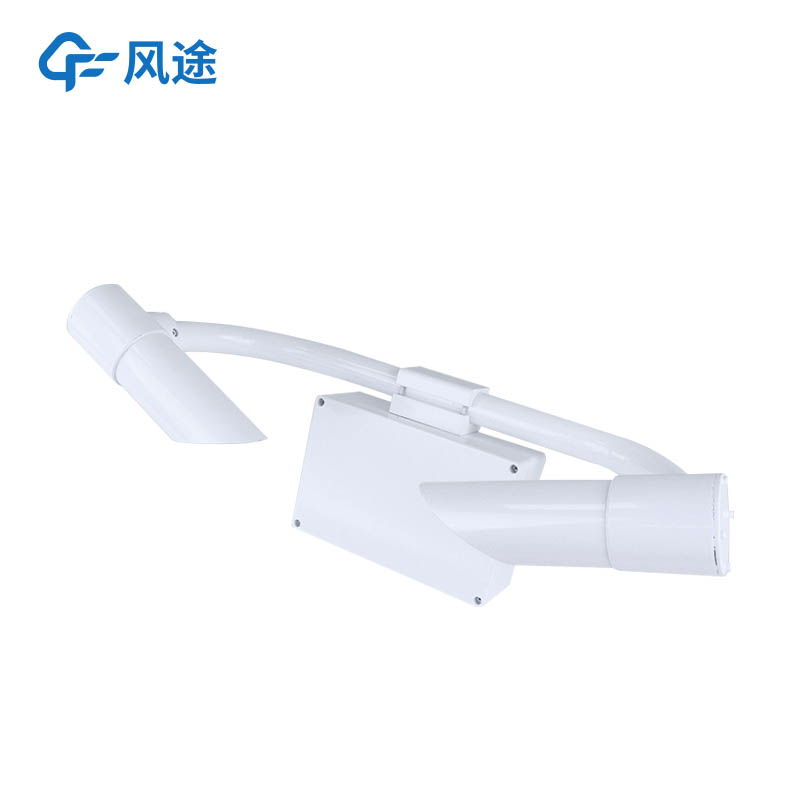Shandong Fengtu IOT Technology Co., Ltd
Sales Manager:Ms. Emily Wang
Cel,Whatsapp,Wechat:+86 15898932201
Email:info@fengtutec.com
Add:No. 155 Optoelectronic Industry Accelerator, Gaoxin District, Weifang, Shandong, China

Sales Manager:Ms. Emily Wang
Cel,Whatsapp,Wechat:+86 15898932201
Email:info@fengtutec.com
Add:No. 155 Optoelectronic Industry Accelerator, Gaoxin District, Weifang, Shandong, China
time:2024-12-30 14:08:31 source:Weather Station viewed:156 time

1.Product introduction of visibility in weather
Visibility in weather is a measure of how far away an object or light can be clearly identified. Visibility is affected by fog and sinking air.The N30 visibility in weather uses the forward scattering method to measure the total extinction coefficient of the air and then calculates the current visibility.It is widely used in road transportation, meteorology and other industries.
2.Technical features of visibility in weather
1.The instrument shell is made of high-quality aluminum material, which is spray-painted after anodizing.The whole machine has excellent waterproof, dustproof and anti-collision properties;
2.The transmitting and receiving lenses of the instrument are designed downward, which greatly reduces interference from stray light such as sunlight;
3.Weather phenomenon recognition, which can identify fog, rain, snow, mixed precipitation, sunny and other weather phenomena, with a high recognition rate;
4.Built-in watchdog circuit to ensure reliable and stable outdoor operation for a long time;
5.The instrument communication and power interfaces all include lightning protection designs, which greatly reduce lightning strikes and static electricity damage;
6.12~24V wide voltage power supply, total power is about 1W, very low power consumption, and can be powered by solar panels, batteries, etc.for a long time;
7.The digital interface uses RS485 or RS232, standard MODBUS protocol, and no protocol adaptation is required;
8.The instrument can output 15s, 1min, and 10min visibility values, which can be read directly without configuration, making it more flexible to use.
3.Visibility in weather implementation standards
QX/T 536-2020 Forward scattering visibility meter test method
4.Visibility in weather technical indicators
| Main parameters | Parameter range | resolution | error |
| Measuring range | 30km | 1m | ≤2km ±2%2km~10km ±5%>10km ±10% |
| Repeatability | ≤4% | ||
| weather phenomenon | Fog, rain, snow, mixed precipitation, sunny | ||
| Weather phenomenon recognition rate | ≥95% | ||
| working temperature | -40~60℃ | ||
| Working humidity | 0~100%RH | ||
| Working power supply | 12~24V | ||
| Power consumption | 1W | ||
| size | 610x230x360mm (length x width x height) | ||
| weight | ≤10kg | ||
5.visibility in weather installation instructions
1.Installation location
The installation location of the visibility meter needs to be on an open, flat, unobstructed ground, away from buildings, trees, shrubs, peaks and other objects.This ensures that the instrument's observation range is not blocked and the data is more accurate.
Unnecessary optical interference should be avoided.The receiver of the visibility meter should be installed facing away from a strong light source (such as sunlight), and the transmitter and receiver should be located in the north-south direction.
2.Installation height
The installation height of the visibility meter should be greater than 1.5m and less than 3m.If the installation height exceeds 3m, the corresponding height should be calibrated.
3.Installation steps
3.1 Before installation, the user should prepare the upright column and install it on the upright column using the clamp provided with the instrument.
3.2 Lift the instrument to a suitable position and use the bolts behind the clamp to install and fix the visibility meter.During installation, ensure that the openings of the receiver and transmitter are facing downwards, otherwise they should be reinstalled.
The construction of ship weather stations is not only of great significance to marine scientific research, but also plays a very important role in safeguarding the development of the national economy. With the rapid development of my country's socialist modernization construction and the signifi...
the best anemometers in the world is a handheld and portable anemometer used to accurately measure wind speed....
rain gauge define is a reliable and accurate instrument that measures the amount of rainfall during periods of rainfall in real time....
Duct wind speed is a very important parameter in industrial production and environmental monitoring. Measuring duct air velocity can help engineers and regulatory agencies to accurately understand the operation of pipelines, to ensure the quality and safety of industrial production, or to monitor pr...